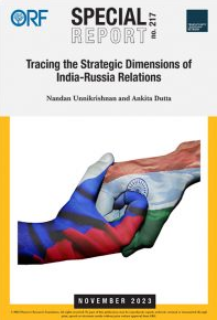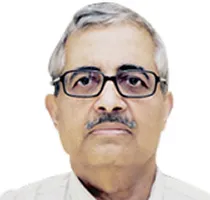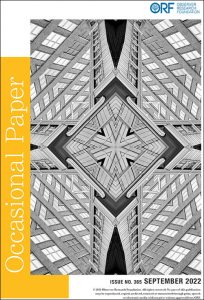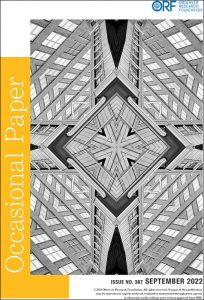Historical Overview
India and USSR established formal diplomatic relations in April 1947, four months before India’s independence.[1] Early diplomatic relations were negligible, perhaps understandably so as Premier Joseph Stalin regarded the bourgeoisie of colonial and dependent countries as “conciliatory” and “counter-revolutionary” forces entering “a conspiracy” with imperialism behind the backs of their own peoples.[2] This began to change towards the end of his life, and in his final years, two of the three ambassadors he received were Indian.[3] The year 1955 was key for India-USSR relations, with then Prime Minister Jawaharlal Nehru visiting Moscow in June 1955 and Nikita Khrushchev conducting a reciprocal visit in November 1955. These two visits would set the pace of the relations for the next three decades.
India-USSR relations could broadly be described as having stood on five pillars.
First was strategic alignment. While India and the USSR did not share a similar ideology or outlook towards global politics, they had common concerns. India had cause to worry with the US-Pakistan bonhomie, while the Soviet Union saw the US as an implacable foe. In the 1960s the deterioration of relations of both countries with China brought them closer. The Soviet Union would emerge as a critical partner for India, using its veto power multiple times at the UN Security Council on issues related to Goa, Kashmir, and Bangladesh.[a] India reciprocated by abstaining in the vote against USSR during the Hungary crisis in 1956, and Czechoslovakia in 1968.[4]
The Treaty of Peace, Friendship and Cooperation signed in 1971 was the culmination of the intensifying partnership. It included a critical security provision under which both would “abstain from providing any assistance to any third party that engages in armed conflict with the other Party. In the event of either Party being subjected to … a threat thereof, the High Contracting Parties shall immediately enter into mutual consultations in order to remove such threat and to take appropriate effective measures to ensure peace and the security of their countries.”[5] Soviet assistance would also prove instrumental in keeping the US and China out of the 1971 war with Pakistan.[6] All factors considered, it is no surprise that India’s partnership with the USSR emerged as a focal point of its foreign policy.
Second was the economic relationship. Soviet Union was the largest foreign contributor to India’s development till 1991. In the 1960s it played an important role in the development of India’s heavy industries including power, coal, mining, steel, oil and gas. Starting with the Bhilai steel plant, the Soviet Union helped India establish some of its biggest industries including ONGC and BHEL. Economic ties were bolstered by the Rupee-Rouble arrangement which allowed India to use its then scarce foreign exchange reserves on other vital needs. This arrangement covered all aspects of India-Russia economic activity, including crude supplies via Iraq, defence purchases, and even tourism.[7] By 1991, the Soviet Union had become India’s largest trading partner and bilateral trade stood at over US$5 billion per year, a large amount in those years.[8]
The third pillar was defence cooperation. Defence constituted a critical part of the Indo-USSR relationship with the bulk of India’s arms purchases coming from the Soviet Union. Dilip Mukerjee identified four reasons why India favoured Soviet defence purchases: the price factor—the prices offered to India by the USSR were lower than those offered by the West; the evolutionary nature of Soviet weapons development process—as many of the upgraded versions included features of the existing models, it became cheaper to restructure the production lines; the Soviet Union was amenable to Indian requests for licensed production, beginning with the MiG-21 agreement in 1962 followed by MiG-27 ground attack fighters in 1983 and T-72 tanks in 1980; and fourth was the Soviet willingness to accept a barter arrangement under which exports in categories such as industrial consumer goods were acceptable.[9] The reluctance of Western countries to engage with India also contributed to New Delhi choosing to deal with Moscow. That the Soviet Union leased to India a nuclear-powered submarine in 1988 spoke volumes about the level of trust the two countries developed in military exchanges.
The fourth pillar was cooperation in science and technology, underpinned by the Science and Technology Agreement of 1972. A joint working group on Science and Technology was set up to coordinate activities. The Integrated Long-Term Programme of Cooperation (ILTP), the largest bilateral S&T program that India had entered with any country at the time, was implemented in 1987.[10] Within the framework of ILTP, from 1984 to 1989, the two countries jointly developed 112 themes in 22 priority scientific areas,[11] including solar energy use, metallurgy, metals manufacture, high pressure physics, meteorology and oceanography.
Fifth, the cultural and people-to-people relations. The two countries had extensive academic, artistic and cultural exchanges. Writers like Leo Tolstoy and Alexander Pushkin had a profound influence on Indian literature and thought. Similarly, Rabindranath Tagore, Mahatma Gandhi and others found resonance among Russian readers. The Soviet Union also contributed to India’s education sphere by providing cheaper books on maths, sciences and education as well as translations of well-known Russian writers.[12] Indian film festivals were also a regular feature in the USSR and many Indian movies became household names. The Soviet Union emerged as a popular location for technical, medical and scientific studies, resulting in many Indian doctors and engineers being trained in the USSR.[13]
The Soviet Union’s collapse was a blow for India, contributing to an ongoing economic crisis that started in 1991. While the Russian Federation emerged as a successor state, it was nonetheless a new and different political entity with a leadership trying to find its moorings. This led to a recalibration of relations between Russia and India.
Relations in the Post-Cold War Period
After 1991, both India and Russia faced severe economic challenges. Not surprisingly, both looked to the West for help in resolving their economic problems, thus reducing their presence on each other’s radars. Russia was also struggling to establish its new foreign policy priorities, often trying to fit a traditional Russian approach to a Western worldview.
On the economic front, India had to adjust to the shock of having to expend precious foreign exchange for its substantial energy imports. More crucially, upheavals in Russia’s economy badly hit India’s defence preparedness with severe disruptions affecting the supply of spare parts for Soviet-made military platforms and ammunition.
In India’s foreign policy this meant a change, at least in tenor, of Russia’s dealings with Pakistan. More tangibly, Moscow, under US pressure, reneged on a deal to supply New Delhi with cryogenic engines for its civilian space programme.[14] As both India and Russia grappled with their multiple challenges, their relations weakened. In addition to economic and defence links softening, lack of money and state support negatively affected cooperation in all other areas, resulting in a significant downgrading of ties. The Treaty of Friendship and Cooperation in 1993 attempted to solve these problems, but its primary contribution was rewording the security clause (Article IX) of the 1971 agreement to effectively nullify its significance.
It is important to note that India undertook a couple of steps that resonated well with important sections of Russian leadership and elites. First was India’s decision to repay in full its debt to the Soviet Union. India owed the USSR about US$30 billion in pre-1992 rates. The crash of the Rouble vis-a-vis the Dollar reduced this amount several fold. New Delhi, as a show of goodwill, decided to repay the original amount instead of recalculating the debt. The second was the decision to pay in advance for an order of Russian fighter planes. This enabled Russia to hold back some of its rapidly dwindling scientific and technical personnel, thus retaining the capacity to design and construct modern fighter planes.
The Russian approach towards India also began to shift when Yevgeny Primakov took over as Foreign Minister in 1996. There were two key developments during this period:[15] first, resisting imposition of sanctions on India in the aftermath of the 1998 nuclear tests; and second, the revival of the agreement, despite US objections, to construct two nuclear plants in Kudankulam.
The election of Vladimir Putin as president in 2000, along with India embarking on a policy of multi-alignment (in the Vajpayee NDA years) led to the expansion of India-Russia relations in that decade. During this period, New Delhi signed a strategic partnership not only with Russia but also with the US and the EU. President Putin stated that India was a key priority partner for Russia and emphasised that irrespective of the trajectory of Moscow’s relations with other countries, including those in Asia, “they would never be alternatives to relations with India or prejudice [toward] them.”[16]
A comparison of India-Russia ties with those of India-USSR on the basis of the five-pillar framework used earlier shows that the first pillar—the political relationship—returned to earlier levels through annual summits, regular high-level meetings, working groups and joint consultations. Despite the reduced salience of political ties, some elements have not changed. Russia has remained committed to its support for India at multilateral forums, especially the UNSC, on issues related to Kashmir. Just as Russia’s veto was valuable prior to the collapse of the Soviet Union, Moscow’s support has been useful after as well.
An example of this was when the status of Jammu and Kashmir was constitutionally amended in 2019. Moscow declared its unequivocal position that this was India’s internal matter and its statement said “the parties involved will not allow a new aggravation of the situation in the region as a result of the decisions.”[17] Second, both India and Russia are advocates of a multipolar world. Both have cooperated through multiple forums like BRICS, RIC, SCO and G20 to collaborate on issues of mutual concern. Russia supports India’s bid for a UNSC permanent seat,[18] and the inclusion of India in various non-proliferation regimes, especially in the Nuclear Suppliers’ Group. It also played an important role in defusing tensions between India and China during the Doklam crisis of 2017 and the Galwan crisis of 2020.[19]
The second pillar—that of economic partnership—proved to be more challenging. Russia was India’s 25th largest trading partner in 2021-22 with US$13 billion. Trade with China and the US was worth US$115 bn and US$119 bn,[20] respectively. The energy relationship appears stronger. Russia’s overall investment in India of about US$14 bn includes the US$13 billion by Rosneft for Essar Oil. This deal is the biggest outbound investment for Russia and the largest FDI investment in India.[21] Indian public sector firms have invested US$15 billion in picking up stakes in Russian oil and gas projects like Sakhalin-1.[22] India also acquired a 26-percent stake in Russia’s Vankor oilfield, while a consortium of Oil India (OIL), Indian Oil Corporation (IOC) and Bharat PetroResources (BPRL) has acquired a 23.9-percent stake in the field.[23] In addition, Russia is India’s only foreign partner in terms of successful nuclear energy projects.
The third pillar, defence partnership, remains the cornerstone of India-Russia relations, and despite some downturn has emerged as most significant. According to a SIPRI report, Russia remains India’s biggest arms supplier, although its share of Indian defence imports decreased from 62 percent to 45 percent between 2017 and 2022. Russia is followed by France and US at 29 percent and 11 percent, respectively, as the largest defence suppliers to India.[24] Russia is also the first country to take advantage of the ‘Make in India’ programme with a factory producing machine guns. Through ‘Make in India’ and the ‘Atmanirbhar Bharat’ mission, New Delhi has been working towards diversifying its defence sector and reduce its import dependency for military hardware. According to reports, “75% of the defence capital procurement budget has been earmarked for domestic industry in 2023-2024, up from 68% in 2022-23.”[25]
In this quest for diversification, India has reduced its dependence on Russian platforms from 70 percent to 60 percent, with steady diversification to the US, Israel, France and South Korea. The Russians still offer a competitive edge, ensuring critical technologies arrive so that India can meet its objective of making defence equipment in India for itself and for export. Russia is likely to remain an important partner for a few more decades given India’s purchase of the S400 Triumph Air Defence Missile System, acquisition of several new frigates, requirement of spare parts for the older acquisitions, the joint production of the Brahmos supersonic cruise missile, as well as Moscow’s help in the nuclear submarine programme.
The other two pillars came to a virtual standstill with the collapse of the Soviet Union and India’s vision shifting westwards. Officials on both sides have made efforts to keep relations alive, but communication has fallen well below earlier levels. People-to-people contacts contracted significantly. Academic and cultural exchanges have dropped to virtually zero. Tourism declined significantly although India’s fabled spirituality still holds a peculiar attraction for Russians. Likewise, Goa sees thousands of Russians visit every year with some staying for extended periods. Moreover, the weakening of the Rouble in the past few years has seen a rapid rise of Indian tourists in Russia. There has also been a significant spurt in yoga practitioners in the country compared to Soviet times.
Academic contacts have intensified in the last decade. Greater numbers of scholars participate in seminars and other projects. More Indians go to study in Russia, although the numbers are nowhere near what they used to be in the days of the USSR. This is probably because back then, students were assured a hefty monthly stipend, cheap lodgings, and free tuition. Cultural exchanges have increased in recent years but visits are still few and far between.
Overall, the India-Russia relationship has faded significantly. That said, while this bilateral is not the primary relationship for India as it was in the past, it continues to be an important one.
New Geopolitical Matrix: US-India-Russia-China
India-Russia partnership is increasingly under stress from the evolving global geopolitical scenario, particularly amidst the growing confrontation between US-China, and US-Russia; and the developing closeness between Russia and China.
While relations between India and Russia improved in the early 2000s, there was also a resurgence in India-US ties. India viewed the US as an important partner in its development quest as a source of investments and new technologies, while for Washington, New Delhi was a huge untapped market. Both also saw the relationship as a crucial factor in balancing China in the Indo-Pacific, although they have started clearly enunciating this only in the past few years.
The 1990s saw a near normalisation of India-China relations through bilateral agreements in 1993 and 1996 on maintaining peace and tranquillity in the border areas. It was predicted that bilateral cooperation would continue to develop along with the talks related to boundary issues.
However, irritants have emerged in the partnership: China’s increasing assertiveness in its neighbourhood, along with the launch of the Belt and Road Initiative and China-Pakistan Economic Corridor in 2013; its actions on Indian border in 2014, 2017 and 2020; its rejection of India’s NSG bid; and its interventions in the UNSC on Pakistan’s behalf on issues related to Kashmir. The relationship hit a nadir with the Galwan clash in 2020.
These developments accelerated India-US relations, particularly with the US stating that India is a global strategic partner.[26] Regular political exchanges and high-level visits have become a common feature for the partnership which has become further cemented due to institutionalisation of various dialogues including on defence, trade and investment, and science and technology.
Growing India-US defence cooperation has resulted in the dilution of Russia’s presence in India’s defence sector. India and the US have signed several defence agreements including Logistics Exchange Memorandum of Agreement (LEMOA), Communications Compatibility and Security Agreement (COMCASA), White Shipping Agreement, and the Basic Exchange and Cooperation Agreement (BECA).[27]
The breakdown of US-Russia relations in the aftermath of the Crimean crisis in 2014 and the 2022 Ukraine conflict has resulted in India treading a fine line between the two partners. As the US and its allies have worked to isolate Russia, India has opposed initiatives such as expulsion of Russia from G20 and refused to join the sanctions regime, despite the threat of secondary sanctions under Countering America’s Adversaries Through Sanctions Act (CAATSA)[28] and endangering defence or energy projects with Russia.
Similarly, the US policy towards China, and vice versa, has become adversarial. The China-US confrontation appears to cover the entire spectrum of their bilateral relations including political, economic, military, technological and strategic issues. In its National Security Policy 2022, the US highlighted that “Beijing has ambitions to create an enhanced sphere of influence in the Indo-Pacific; to become the world’s leading power, increase influence over international institutions to create more permissive conditions for its own authoritarian model and to mould global technology use and norms to privilege its interests and values. It uses its economic power to coerce countries…seeks to make the world more dependent on the PRC while reducing its own dependence on the world – all while seeking to erode U.S. alliances in the region and around the world.”[29] It also highlighted a critical re-structuring of global order where the PRC and Russia were increasingly aligned with each other.
Meanwhile, Russia-China relations have been progressing since the early 2000s as they settled their long-standing border dispute. With China’s economic expansion, demand for Russian raw materials including hydrocarbons have created complementarities in their relations. This is augmented by their shared opposition to Western dominance and a common quest for a multipolar world, even as they diverge on its contours. China has also refused to call out Russia for its actions in Ukraine[30] while emerging as the biggest importer of Russian energy.[31]
The growing closeness of Russia to China could create the impression that Moscow is playing a subordinate role to Beijing. However, deeper analysis will show that significant differences still exist between the two powers and Russia is unlikely to become a vassal state anytime soon. Russia remains one of the major powers globally given its nuclear weapons arsenal and its role as a significant exporter of energy, food and raw materials. Its economy has so far been able to withstand the wide-ranging western sanctions even if these may have some impacts later.
India’s Stance on the Ukraine War
During the Crimean crisis of 2014, India maintained that it had a consistent stance on the territorial integrity of nations and expressed hopes for a diplomatic solution which could safeguard “legitimate interests of all countries in the region”. Then National Security Adviser Shivshankar Menon said “the broader issues of reconciling various interests involved, and there are legitimate Russian and other interests involved…We hope those are discussed, negotiated and that there is a satisfactory resolution to them.”[32] Similarly, on the ongoing Ukraine crisis, India has not condemned Russian actions while also maintaining its trade and economic ties. It has taken care not to openly advocate for sanctions, while calling for a quick resolution to the crisis. New Delhi’s balancing act emerges from its quest to safeguard its interests while understanding its strategic vulnerabilities. While it may not have condemned Russia for its actions, India’s position has evolved over time. Prime Minister Narendra Modi has stated, “this is not the era of war,”[33] calling on President Putin to cease hostilities—a clear signal that India does not support Russia’s action.[b]
What’s Next?
India and Russia may share a long history of diplomatic, military, economic and cultural ties, but the partnership is under duress due to multiple global stressors. Both will keep looking for partners who can help them navigate the global geopolitical churn. In the next decade, India’s priority is economic growth with the government’s declared target of making India a US$5-trillion economy by 2025. This goal includes plans to diversify and indigenise its defence and tech sector and to achieve this, India will gravitate to the West.
Although this will dilute the salience of the relationship with Russia, Moscow will remain an important partner in the context of strategic issues, defence supplies, energy cooperation and in the Eurasian region. For example, one area where India and Russia could collaborate is in Russia’s Far East, with India providing finance and personnel to develop this resource-rich but demographically-challenged area bordering China.
In a geopolitical sense, given that India’s primary adversary is its Asian neighbour to the north, China, India sees sense in engaging both with China’s primary geopolitical adversary, the US and also its closest partner, Russia. While this may dictate some changes in their foreign policy orientations, India and Russia will try to maintain their partnership, which both view, at least for the time being, as beneficial in an emerging global order.
Nandan Unnikrishnan is Distinguished Fellow, Observer Research Foundation, New Delhi.
Dr. Ankita Dutta is Assistant Professor, Centre for European Studies, School of International Relations, JNU.
Endnotes
[a] In 1961, USSR had vetoed a proposed resolution by Portugal invoking the UN Charter to ask India to withdraw their forces from Goa; USSR and later Russia, have used vetoes multiple times in favour of India over discussions on Kashmir; it also used its veto power during the India-Pakistan war of 1971 and liberation of Bangladesh to ensure that the issue remained bilateral. See
[b] This position could be a thorn in Indo-US relations, although it does not make sense to place this issue at the centre of bilateral ties given that India clearly does not support the war and does not have the means to end it. There are many other issues of mutual interest and of greater concern that India and the US should pursue.
[1] Prem K. Budhwar, “India-Russia Relations: Past, Present and the Future”, India Quarterly, Vol. 63, Issue No. 3 (July-September, 2007), pp. 51-83
[2] Valeriy Kashin, “What Stalin Thought of Gandhi and Nehru”, Russia Beyond, May 3, 2012.; Larisa Chereshneva, “India-Russia Diplomatic Engagement: The Stalin Years” in A. M. Chenoy, A. Upadhyay (eds.), “Hundred Years of the Russian Revolution: Its Legacies in Perspective”, (Palgrave Macmillan: Springer), 2021.
[3] Valeriy Kashin, “What Stalin Thought of Gandhi and Nehru”, Russia Beyond
[4] Vivek Katju, “In India’s balancing act, echoes from the past”, The Indian Express, April 10, 2022.
[5] “Indo-Soviet Treaty of 1971”, Indian Embassy, Moscow.
[5] Dilip Mukerjee, “India and the Soviet Union”, The Washington Quarterly, Vol. 9, Issue No. 2, 1986, pp. 109-122
[6] Rajan Menon and Eugene Rumer, “Russia and India: A New Chapter”, Carnegie Endowment for International Peace, September 20, 2022,
[7] Vidya Nadkarni, “Strategic Partnerships in Asia – Balancing without Alliances”, Routledge, 2010
[8] Vidya Nadkarni, “Strategic Partnerships in Asia – Balancing without Alliances”.
[9] Dilip Mukerjee, “India and the Soviet Union,” The Washington Quarterly 9:2, 109-122, 1986
[10] P. Stobdan (ed), “India-Russia Strategic Partnership Common Perspectives”, Institute for Defence Studies and Analyses.
[11] P. Stobdan (ed), “India-Russia Strategic Partnership Common Perspectives”.
[12] Paromita Sen, “Red Reading Hood”, The Telegraph, March 28, 2020.
[13] Alexander Leonardovich Aref’ev and Nikolay Mikhailovich Dmitriev, “Indian Students in Russia: Sociological and Statistical Profile”, Indian Journal of Science and Technology, Vol. 9, Issue No. 44, 2016, pp. 1-14
[14] Raj Chengappa, “US blocks critical cryogenic deal, forces India to indigenise”, India Today, August 15, 1993,
[15] Vinay Kaura, “India’s Changing Relationship with Russia: Challenges and Convergences”, RUSI Journal, Vol. 163 No. 1, February/March 2018, Pp. 48–60
[16] P.S. Raghavan, “Finding Compatibility Between Eurasian Partnership and Indo-Pacific Security: And Indian Perspective”, in Glenn Diesen and Alexander Lukin (eds), “The Return of Eurasia” Continuity and Change”, (Palgrave Macmillan), 2021
[17] “Russia supports India’s move on J&K”, Livemint, August 10, 2019.
[18] “Russia once again backs India’s permanent membership at UNSC”, The Times of India, 12 December 2022.
[19] Saibal Dasguta, “Russia refused to toe China line on Doklam: Envoy”, The Times of India, September 2, 2017.; Atul Aneja, “Russia begins discreet moves to defuse India-China tension”, The Hindu, June 19, 2020.
[20] Trade figures, Ministry of Commerce, Government of India.; Trade figures, Ministry of Commerce, Government of India.; Trade figures, Ministry of Commerce, Government of India.
[21] “Essar Oil completes $13 billion sale to Rosneft-led consortium in largest FDI deal”, The Economic Times, August 22, 2017.
[22] Dipanjan Roy Chaudhury, “India, Russia may seal oil field deal in Oct’s annual summit”, The Economic Times, September 21, 2018.
[23] “OVL completes acquisition of 11% add’l stake in Vankor”, The Economic Times, October 31, 2016.
[24] “Russia remains India’s top arms supplier: SIPRI data”, Livemint, March 15, 2023.
[25] “India is fighting a war with its defence imports. Is it winning”, The Economic Times, May 16, 2023.
[26] “US reaffirms India as global strategic partner; supports constructive talks between Indo-Pak”, Livemint, March 10, 2023.
[27] “India-US Bilateral Relations – A Brief”, Ministry of External Affairs, Government of India.
[28] “Countering America’s Adversaries Through Sanctions Act-Related Sanctions”, Office of Foreign Assets Control, US Department of the Treasury.
[29] “National Security Strategy”, The White House, October 2022.
[30] Oliver Slow, “China refuses to condemn Russia’s Ukraine invasion during G20 deadlock”, BBC, February 25, 2023.
[31] Ailing Tan,“China’s Russian Energy Imports Balloon to $88 Billion Since War”, Bloomberg, March 21, 2023.
[32] Zachary Keck, “India Backs Russia’s ‘Legitimate Interests’ in Ukraine”, The Diplomat, March 8, 2014,
[33] Sachin Parashar, “This is not an era of war, let’s talk peace: PM Modi tells Russian president Vladimir Putin on sidelines of SCO summit”, The Times of India, September 17, 2022.
The views expressed above belong to the author(s). ORF research and analyses now available on Telegram! Click here to access our curated content — blogs, longforms and interviews.

 PDF Download
PDF Download



 PREV
PREV



